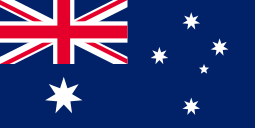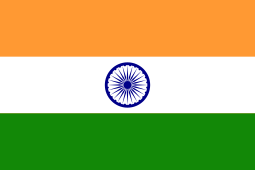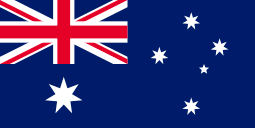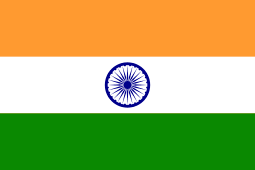7. SMS Segment
7.1. SMS Segment and Character limits
Phone carriers measure the size of a text message in character batches which are called segments. There’s a fixed limit for characters that can be embedded in one text message, which is called a Character limit. A text message exceeding the character limits can be split up into multiple SMS segments. Inadvertently, your SMS campaign can cost more than you expected and increase your SMS bills and business investments.
7.2. Difference between GSM and non-GSM characters
7.2.1. What are GSM Characters
GSM Alphabet or GSM-7 is a default character encoding standard that groups commonly used letters and symbols in many languages into 7 bits each for usage on GSM networks.
In simple words, the GSM character uses seven bits per character encoding. GSM characters are plain texts that do not require any special encoding.
7.2.1.1. Examples of GSM Characters
A B C D E F G H I J K L M N O P Q R S T U V W X Y Z a b c d e f g h i j k l m n o p q r s t u v w x y z 0 1 2 3 4 5 6 7 8 9: < = >?
7.2.2. What are Non-GSM characters
Non-GSM characters include special characters and non-alphanumeric characters. Also, non-GSM characters consist of non-Latin alphabet-based languages like Arabic, Tamil, Chinese, Cyrillic, etc. The characters for such languages are supported within Unicode. Even emojis are encoded in the Unicode character set. The non-GSM characters use sixteen bits per character encoding.
7.2.2.1. What is a Unicode character?
Unicode is an international character set, or we can say international character encoding standard that assigns a unique number to every character of non-Latin alphabet-based languages and scripts.
7.2.2.2. What are Special Characters?
Special characters can be defined as any character that is not an analphabet-based alphabet or numeric character.
7.2.2.3. Examples of Non-GSM Characters
Here are Emojis and Unicode characters
😀 😀 😀 😀 😀 😁 😂 😃 😄 😅 😆 😇 😈 😉 😐 😑 😒 😓 😔 😕 😖 😗 😘 😙 😠 😡 😢 😣 , etc.
¢ ¦ ¨ © ª « ¬ ® ¯ ° ± ¹ ² ³ ´ µ ¶ · ¸ ¹ º » ¼ ½ ¾ À Á Â Ã È Ê Ë Ì Í Î Ï Ð Ò Ó Ô Õ × Ù Ú Û Ý Þ á â ã ç ê ë í î ï ð ó ô õ ÷ ú û ý þ ÿ, etc.
7.3. Character limits for GSM and non-GSM
7.3.1. For GSM characters
Users can send a long GSM message of up to 1000 characters. The character limit for one segment containing GSM characters is 160 characters.
7.3.2. For non-GSM characters
Users can send a long non-GSM message of up to 1000 characters. The character limit for one segment containing non-GSM characters is 70 characters.
7.3.2.1. For Emojis
Users can send a long message that only consists of Emojis of up to 500 characters. This is because of emojis exhaust the space of 2 characters.
7.4. Using Characters to connect segments
7.4.1. For GSM characters
It takes 7 characters to combine each message with GSM characters. So, it takes 14 characters to combine the first two messages. (7 characters for the first message and 7 characters for the second message, so 7+7=14)
If users are sending one message, it can hold a maximum of up to 160 characters. If the character limit is exceeding 160 characters, the character limit gets reduced to 153 for each message, and it would take 14 characters to connect the first two messages. Going forward, it takes 7 characters to combine second and third, fourth, fifth messages, and so on.

First GSM Segment with Character Limit 160
➕ 14 Characters to connect First and Second GSM message

Second GSM Segment with Character Limit 146

Additional Character leading to Third GSM Segment
➕ 7 Characters to connect Second and Third message

Third Segment with Character Limit 153

Additional Character leading to Fourth Segment
7.4.1.1. Industries logic to count segments for GSM characters
The first message would contain 160 characters. After that, users can divide the total no. of characters by 153. If the remainder is zero (0), the quotient will be the segment count, and if the remainder is 1, users should add 1 in the quotient, and the extracted value will be the segment count.
7.4.2. For non-GSM characters
It takes 3 characters to combine each message with non-GSM characters. So, it takes 6 characters to combine the first two messages. (3 characters for the first message and 3 characters for the second message, so 3+3=6)
If users are sending one message, it can hold a maximum of up to 70 characters. If the character limit is exceeding 70 characters, the character limit gets reduced to 67 for each message, and it would take 6 characters to connect the first two messages. Going forward, it takes 3 characters to combine second and third, fourth, fifth messages, and so on.

First non-GSM Segment with Character Limit 70
➕ 6 Characters to connect First and Second non-GSM message

Second non-GSM Segment with Character Limit 64

Additional Character leading to third non-GSM text Segment
➕ 3 Characters to connect Second and Third non-GSM message

Third non-GSM Segment with Character Limit 67

Additional Character leading to fourth non-GSM text Segment
7.4.2.1. Industries logic to count segments for GSM characters
The first message would contain 70 characters. After that, users can divide the total no. of characters by 67. If the remainder is zero (0), the quotient will be the segment count, and if the remainder is 1, users should add 1 in the quotient, and the extracted value will be the segment count.
7.5. Impact of adding one special character or emoji to a GSM message
The addition of a special character or an emoji to a text with GSM characters has a severe impact on the segment count, encoding standard, and overall SMS bill.
- Segment and Encoding Standard
GSM characters use default character encoding standards, but an addition of a special character turns the message into Unicode, and it starts using international character encoding standards. Consequently, all GSM characters turn into non-GSM characters, and the character limit gets reduced to 70 characters per segment.
- Cost
Text messages are charged on the basis of segments. So, an addition of a special character or an emoji to a text with GSM characters reduces the character limit. This leads to increased segment counts which further leads to high SMS bills.

SMS Segment with GSM characters

GSM text with one special character

GSM text with one Emoji
7.6. Language Support
360 SMS supports all languages and character sets. As a result, users can send text messages in any language they want.
Consider SMS Segments while Creating Texts and Cut back on High SMS Bills
Adequate knowledge of SMS Segments and GSM and non-GSM characters helps users to be cautious while drafting their text messages. This helps them to send succinct and precise information without increasing the segment counts and steer clear of high SMS bills.






